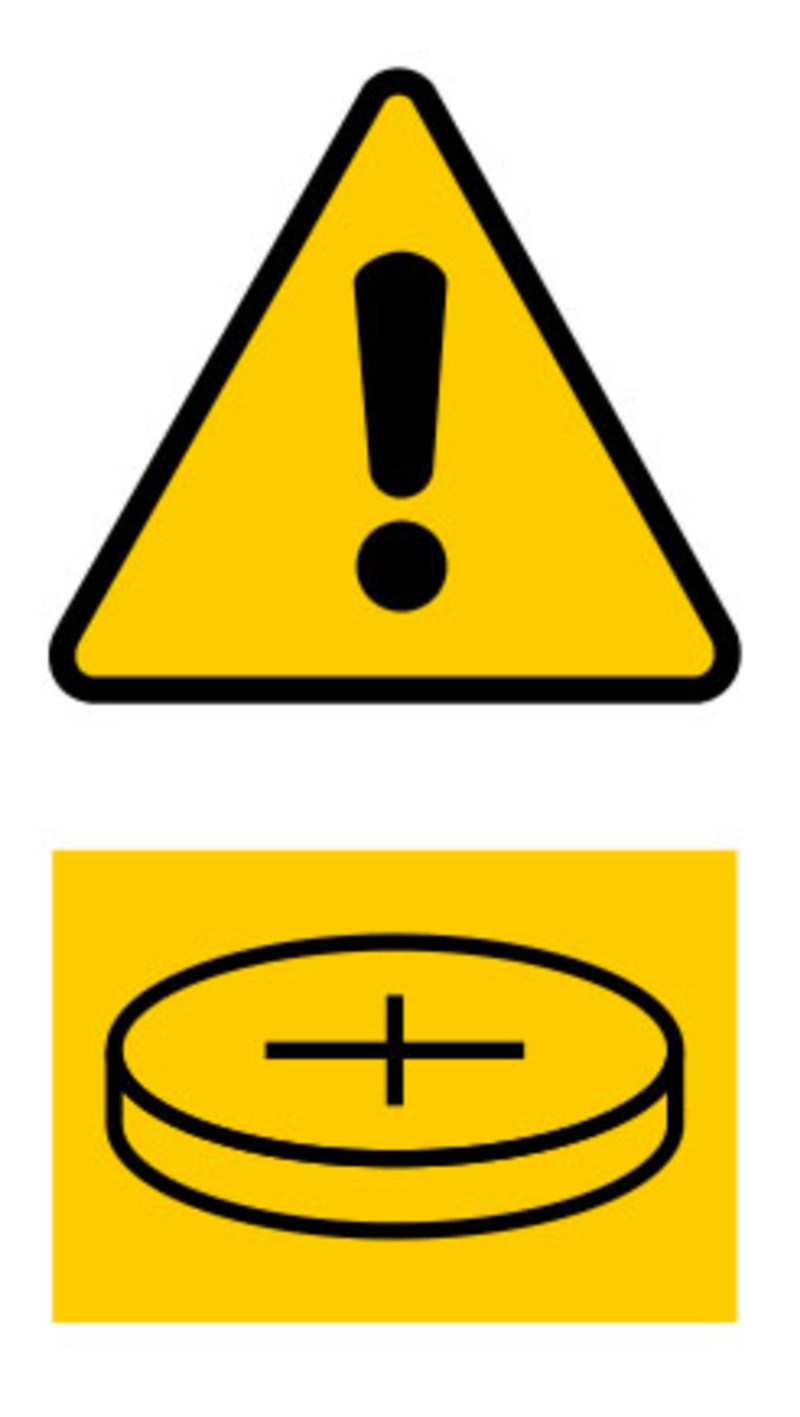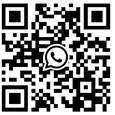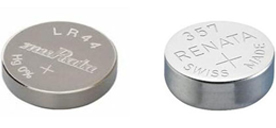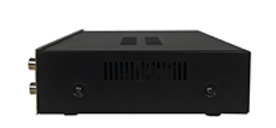Avoiding the dangers of button battery for children
2024/12/24 18:18:58
Views:
Button batteries are small, seemingly harmless, and found in many household items with button batteries, but they pose a significant button battery ingestion hazard, especially to young children. Each year, thousands of children are injured or even killed by swallowing button batteries, so it's important for parents, caregivers, and manufacturers to understand and mitigate the button battery dangers for children. In this article, we'll explore the button battery safety risks, common household items with button batteries, what to do if your child swallows a button battery, and how to protect your loved ones from this hidden danger.
Dangers of Button Battery Ingestion in Children
Table of Contents
- Why are Button Battery Dangerous?
- Button battery swallowing deaths per year
- Toys with button batteries
- What happens if you swallow a button battery?
- What to Do If Your Child Accidentally Swallows a Button Battery?
- How to Protect Children from Button Batteries
- Proper disposal and recycling of button batteries
- Sum up
- Frequently Asked Questions
Why are Button Battery Dangerous?
Button Battery Swallowing Risks

Button battery swallowing
One of the most dangerous features of button battery for children is its swallowing risk. Children often put objects they don't recognize in their mouths, especially if they are small and attractive. Because button batteries is sized for a child's mouth and esophagus, the risk of accidental swallowing is high. Once a child swallows a button battery, it can lead to:
Leakage and explosion
Even if a child does not swallow a button battery, battery leakage and explosion may occur if the battery is damaged or subjected to external environmental influences (e.g., excessive heat or moisture). Leakage of lithium button cell batteries may not only cause skin burns, but may also lead to fire or explosion, creating a more serious safety hazard.
Safety labels and warnings

Button battery safety warning labels
To alert consumers to the potential dangers of button batteries, warning labels are placed on many products and toys. These labels often alert parents that the product contains button battery and suggest that special care should be taken during use. However, many parents may ignore these warnings, resulting in their children accidentally coming into contact with and swallowing button batteries by mistake. As a result, parents need to remain vigilant to ensure that their children do not come into contact with these dangerous items.
Button battery swallowing deaths per year
Each year, the number of children seriously injured or killed by accidentally ingested button batteries continues to increase. According to the American Academy of Pediatrics (AAP), more than 2,500 children in the U.S. are treated for button battery ingestion injuries each year, with many of these incidents resulting in hospitalization and even death. Studies show an average of 2-3 deaths per month as a result. This data highlights the importance of raising awareness and taking timely action on the dangers of button battery.
Real Case:
Australia-2013: A 2-year-old boy accidentally swallowed a button battery, which became lodged in his esophagus causing severe burns, and died a few days later.
United States-2017: A 4-year-old girl in Texas swallowed a button battery, and although it was successfully removed, the burns caused by the battery required long-term treatment.
UK-2018: A 5-year-old boy swallowed a button battery, which became lodged in his esophagus and caused chemical burns, and had a long recovery despite successful surgery.
Canada-2019: A 3-year-old child accidentally swallowed a button battery, causing severe gastrointestinal damage, and was fortunate to be treated in time to avoid more serious consequences.
Toys with button batteries
Toys are one of the main sources of button battery exposure for young children, especially toys with electronic features such as light-up, sound-emitting or interactive toys.
Electronic dolls and playthings:
Dolls that can make sounds or light up, for example, usually have button battery batteries that help the doll make sounds or produce light effects.
E-books or interactive toys:
Such as children's books or interactive toys with sound and light effects, which are often equipped with small button batteries to realize audio or visual effects.
LED light toys:
This includes light-up toy pistols, light sabers, and light-up balls, which typically use button battery to power the LEDs inside.
Remote control toys:
Some toys, such as small remote-controlled cars, boats, or airplanes, may use button batteries to power them, especially remote controls and certain small devices, making them button battery hazards for children.
Clock and timer toys:
Alarm clocks, timers, or similar toys for children usually require a button battery to power the display function.
Electronic puzzles and learning toys:
Some puzzle toys and learning toys that require audible cues or interactive feedback may also use button battery.
Parents and caregivers should regularly check toys in the home to ensure that battery compartments are securely closed with screws or other safety devices to minimize the risk of children swallowing batteries.
What happens if you swallow a button battery?
Button battery ingestion can cause a range of serious symptoms, which vary depending on the type of battery swallowed, how long it takes to dispose of it after swallowing, and whether or not the battery is leaking. The following are common button battery swallowing symptoms:
1. Early symptoms after swallowing
Coughing: Your child may experience a cough as a result of the battery getting stuck in the throat or above the esophagus.
Drooling: If the battery blocks the throat, the child may not be able to swallow properly, resulting in profuse drooling.
Chest or throat pain: Batteries in the esophagus may cause localized discomfort or pain that manifests as a burning sensation in the chest or throat.
Dysphagia: Your child may exhibit an inability to swallow smoothly, especially when swallowing solid foods.
Voice changes: If the battery affects the airways or trachea, the child may have difficulty speaking or his or her voice may become hoarse.
2. Symptoms Within 24 Hours:
Vomiting: If the battery causes irritation or damage to the esophagus, it may result in vomiting.
Abdominal Pain: After swallowing, the battery may trigger gastrointestinal discomfort or abdominal pain.
Fever: If the battery leaks inside the body and releases harmful substances, it may cause fever or other symptoms of infection.
Shortness of breath or wheezing: If the battery causes an obstruction of the airway or an allergic reaction, the child may exhibit difficulty breathing.
3. Symptoms following battery leakage or explosion
Severe pain: If a battery leaks, the electrolyte may burn the esophagus or stomach, causing severe pain.
Black or bloody stools: If the battery has caused bleeding in the esophagus or stomach, your child's stools may be black or bloody.
Whitening or fainting: Toxic substances released from batteries may cause poisoning in the body, causing your child's skin to whiten, unconsciousness or fainting.
4. Other long-term symptoms (if untreated)
Esophageal Perforation: Left untreated, batteries can cause serious perforation of the esophagus or stomach lining, leading to long-term health problems.
Ongoing digestive upset: Even if the battery has not caused serious trauma, it may still cause long-term digestive discomfort in your child, such as nausea and vomiting.
If you suspect your child has swallowed a button battery, seek medical attention immediately. Time is of the essence to prevent further damage.
How long after swallowing a Button battery do symptoms show?
The time it takes for symptoms to appear after swallowing a button battery may vary depending on a number of factors, but typically, symptoms begin to appear within a few hours to 24 hours.
Time differences: Different children and different types of button battery (e.g. Lithium vs. Alkaline) may cause different symptoms to manifest. Lithium batteries are more likely to cause chemical reactions and more serious health problems than regular alkaline batteries.
Rapid Response: While some symptoms may become apparent within a few hours of swallowing, sometimes the onset of symptoms may be slightly delayed. Regardless of when symptoms appear, you should seek medical attention as soon as you suspect your child has swallowed a button battery to ensure that appropriate treatment is taken in a timely manner.
What to Do If Your Child Accidentally Swallows a Button Battery?
Correct operation
Call emergency numbers: If your child swallows a button battery, call emergency services at the first opportunity (e.g., 911 in the U.S., other areas depending on local emergency numbers). Seek medical help as soon as possible.
Stay calm: Try to stay calm, reassure your child and make sure they are in a safe position to avoid any strenuous exercise.
Remember the time and details of the swallowed battery: Try to keep a record of when and how your child swallows the battery, including the type and size of the battery and possible swallowing scenarios. This information is very important to the doctor.
Keep your child quiet: Try to keep your child as quiet as possible and avoid excessive activity or attempts to cough to prevent the battery from shifting or causing further injury.
Misoperation
Do not try to induce vomiting on your own: Do not try to make your child vomit or remove the battery on your own. This may displace the battery or cause more damage, or even aggravate damage to the esophagus or gastrointestinal tract, leading to button battery burns or other serious injuries.
Don't Ignore the Symptoms: Even if your child acts like he or she is fine, it's not something to take lightly. button battery can cause serious internal damage and symptoms may not be apparent for a short period of time. Therefore, any swallowed battery requires immediate medical attention.
Don't give juice, food or water to your child: Some parents may try to "flush" the battery by letting their child drink water or juice, but this is wrong. Drinking water can trigger a chemical reaction between the battery and gastrointestinal fluids, leading to battery leakage or short circuiting.
Don't give honey to your child: Some parents may try to give honey to their child to "ease" the situation, but this is wrong. Honey can react with batteries under certain conditions, making them more dangerous and not providing any relief.
Do not delay medical attention: Do not assume that the battery will "drain itself". Even if the child does not seem to be in obvious discomfort, delaying medical attention may result in more serious injury, especially since the battery can cause serious damage in the gastrointestinal tract.
How to Protect Children from Button Batteries
Buy safely designed toys
When purchasing children's toys, make sure the battery compartment safety of the toy is securely closed and use a compartment that requires a tool to open, reducing the risk of button battery ingestion accidents.Choose toys without button battery or those designed for children with protective measures.
Storage of Button Battery and Equipment
Store button batteries and electronic devices containing button batteries out of the reach of children and make sure the battery packaging is intact. Batteries should be stored in their original packaging or in specialized containers to avoid scattering them around the home and creating button battery ingestion hazards.
Educate your children
Even if your children are very young, it is important to communicate the dangers of button battery to them and prevent them from putting toys or other small items in their mouths. Teach children not to touch electronics or batteries, especially without parental supervision.
Regular inspection of the home environment
Parents should regularly check batteries, toys and electrical appliances at home to ensure that they are not easily accessible to children. For batteries that are no longer in use, they should be properly recycled in a timely manner to avoid children getting them by mistake.
Proper disposal and recycling of button batteries
Improper disposal of button batteries not only poses a threat to your child's safety but can also pollute the environment. Recycling button batteries properly is key to reducing environmental hazards from button batteries. Toxic substances in button battery, such as mercury and lithium, can contaminate soil and water if not disposed of properly. Therefore:
Proper Handling of Button Battery
Avoiding indiscriminate disposal
Don't just throw button batteries in the trash; they contain hazardous substances that can contaminate soil and water, creating a potential environmental risk from button battery waste.
Secure
Keep discarded batteries in a sealed container away from children and pets to avoid short circuiting or accidental ingestion.
Handling of damaged batteries
If the battery expands or ruptures, store it in a fire-resistant container and try to avoid direct contact with hazardous materials.
Recycling Button Battery
Finding recycling points
Take discarded batteries to specialized recycling bins, usually located in electronics stores, supermarkets or community centers.
Understanding Recycling Policies
Know your local battery recycling regulations and follow official recycling channels to ensure proper battery disposal.
Regular recycling
Regularly sort out discarded batteries to avoid prolonged storage and reduce environmental hazards.
Sum up
Button battery are a major hazard in many homes, and accidental ingestion of button battery can lead to serious injury or even death, especially for young children. The key to prevention is awareness, and parents must take steps to ensure that button battery are kept out of their children's reach, toys and equipment are properly secured, and children are made aware of their dangers. If a child accidentally ingests a button battery, immediate medical attention is key to preventing long-term damage. By recognizing the dangers of button battery and taking proactive measures, we can protect our children from this potentially deadly hazard.
Frequently Asked Questions
Can button batteries affect breathing?
Yes, if the battery lodges in the airways, it can cause difficulty breathing or choking. Immediate medical attention is needed.What if I find a loose button battery at home?
Keep it out of reach of children and store it in a safe container. Dispose of it properly at a recycling center.How fast can a button battery cause damage?
Damage can begin within hours of ingestion, with symptoms worsening over 24 hours. Immediate treatment is essential.Are there safer alternatives to toys with button batteries?
Yes, look for toys that use AA or AAA batteries, or toys that don't require batteries at all. Always choose well-designed, secure toys for young children.Can button batteries explode if swallowed?
Yes, if a battery leaks or gets damaged inside the body, it can cause chemical burns, and in some cases, lead to an explosion.Related Information
-
-
Phone
+86 135 3401 3447 -
Whatsapp





